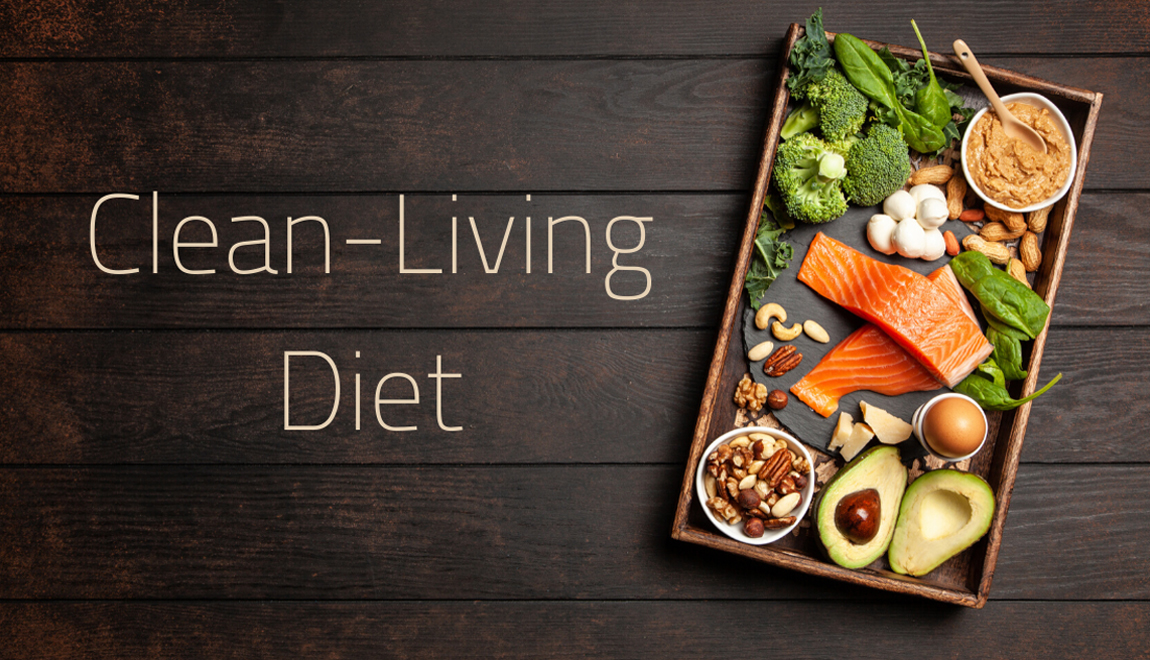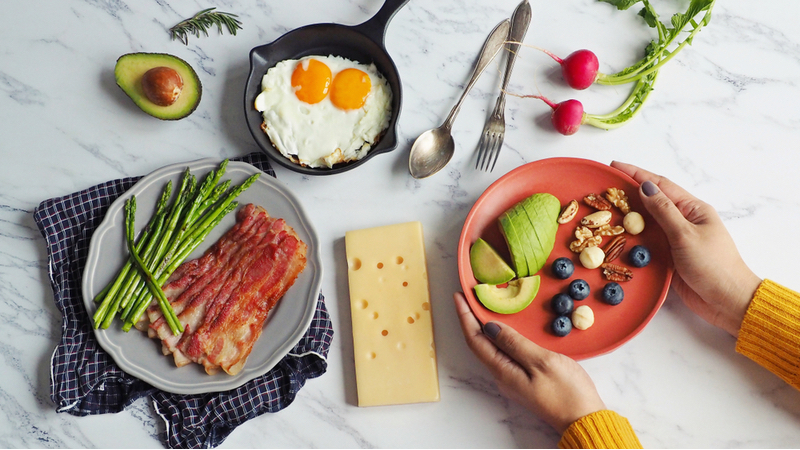
WHAT IS THE CLEAN-LIVING DIET?
Clean living is first of all about choosing to live clean. Meaning choosing to nourish your body only with clean ingredients and making an active choice to take out anything that is not naturally produced or added.
Choose ingredients that are as close to nature as possible, eat Vegetables, Meat & Healthy Fats, that`s it! Preferable organic, local grown. This way you eliminate toxins from pesticides, leftover medicine and other nasty stuff, that you do not want to end up in your body.
LIMITING YOUR INTAKE OF CARBS
Low Carb, High Fat, known as the LCHF-diet, the paleo diet and Keto diet is very similar to the Clean-Living diet. The difference is choosing to eat only clean ingredients, and nothing added.
The similarities to these very popular diets is that you eliminate sugar and your intake of carbohydrates (carbs), especially starch. When doing so, your body’s metabolism will switch from using glucose (carbohydrates) as your fuel into burning fat (and ketones). It is called getting in a state of ketosis.
On the Clean-Living Diet, you do not have to be in ketosis – the most important thing is to take away the main “normal” carb group like bread, potatoes, rice, legumes and so on and focus on eating organic Vegetables, Meats and Healthy Fats.
If your goal is to lose weight, you can choose the “stricter” way of The Clean-Living Diet, where you eat a very limited intake of carbs, for men this will typically be around 40-50 grams a day whereas for women around 20-30 grams a day.
On the Clean-Living Diet I do not always stick to these numbers, meaning I will sometimes post recipes that will add up on carbs more easily. For instance when we talk about vegetables and lowering your intake to these extreme amounts you have to be very aware not to eat vegetables grown under the soil and mainly eat green vegetables as they contain less carbohydrates.
There are times when I enjoy a few more carbohydrates (from vegetables) and therefore you will see recipes with sweet potatoes, tomatoes, bell peppers etc. Often the amounts are not that big, and you should still be able to continue your weight loss, if this is what you are aiming for. Once your body has adapted to this way of living, the additional amounts should not be so big as to affect any weight loss, even if you’re not in ketosis.
CLEAN LIVING AND WEIGHT LOSS
Whilst my intention by promoting the Clean-Living Diet is mainly to help you to stabilise blood sugar and feel more comfortable in your body, a lot of people do start to lose weight.
Switching into burning fat instead of carbs is what makes the difference. The reason why, is because your appetite will automatically be reducing, you will feel full for longer and your sugar cravings will disappear. You see – the completely opposite to what normally happens when going on a weight loss diet.
The body now has free access to absorb energy in the body’s own fat stores and therefore does not interpret the situation as hunger, the outcome is that a lot of people who have weight to lose, start to lose it.
CLEAN LIVING AS A LIFESTYLE
I choose and recommend Clean-Living as a lifestyle. Once you adapt to it you will feel great, your blood sugar will become stable and you will know that you treat your body with the best of the best. Saying “goodbye” to sugar, starch, additives, pesticides etc is the best thing that I have done for my body.
Diving into micronutrients
Another thing that differentiates the Clean-Living Diet from other diets is the fact that you dive into the micronutrients. You will get enlightened and learn what foods contain, what vitamins & minerals. With time this will change the way you look at food.
VEGETABLES, MEAT & FAT

The Living Clean diet is mainly eating organic Vegetables, Meat and Healthy Fat as your main food source and eliminate everything else.
VEGETABLES
In this diet vegetables is your main source to carbs. I recommend that you chose mainly to eat vegetables grown above ground because these contain less starch and carbs. This does not mean that you should never eat potatoes or carrots, I just recommend you eat less of them.
Organic grown, green vegetables is your number one. If you aim to get into ketosis you have to keep your carbohydrate intake as low as 20-30 gram per day if you are a female and 40-50 gram if you are male. If you do a lot of exercise you can exceed these limits.
Green salads, vegetables and cabbage is the best choice. You can easily eat 500g of these a day, if you feel like it and stay low in carbs.
MEAT

On the Clean-Living Diet you can choose to eat meat or not. Choosing not to can be a lifestyle choice or because you also want to take your blood type into consideration. Being a Blood Type A you do not really need meat because you take up proteins well from vegetables.
Though I recommend eating animal protein, ie. white meat like, fish, poultry, eggs and partly also dairy products such as cheese. Dark meat I recommend you use very rarely – I do so, in small amounts, on special occasions.
Animal protein is the most saturating macronutrient and sufficient protein is important to succeed when nursing your body on the Clean-Living Diet. If you start to lose fat it will also make sure that you do so without losing muscle mass.
Animal protein is opposite to plant protein (beans and lentils, for example) complete protein, which means that it contains all the amino acids, including the essential amino acids that we need covered.
Animal protein contains no carbohydrates, which makes it possible to succeed in eating so few carbohydrates. The exception here is eggs, which actually contain a little carbohydrate, depending on the size of the egg it is around 1 carb per egg.
FAT

Healthy fat that is.
When eating the Clean-Living way, fat turns into your body’s energy source. With too little fat, it is difficult to feel really full. You get fat through meat, but most people will need to add some extra fat.
You will need to eat the amount of fat that makes you saturated, this will help you feel satisfied and keep you away from other foods like sugar.
What is enough fat?
You get enough fat when you do not feel hunger between breakfast, lunch and dinner. If you feel fatigued and slightly nauseous and your weight goes up, you may be eating too much fat.
Healthy fat
10 healthy fats to include in your diet:
1. Avocados
2. Cheese
3. Gee & Butter 🧈
4. Whole eggs
5. Fatty fish
6. Nuts
7. Chia seeds
8. Extra virgin olive oil
9. Coconut oil
10. Full fat yoghurt
Remember the “living CLEAN” way, meaning that you get the product from the cleanest source possible. Preferably organic, local and without additives.
I recommend limiting the intake of the omega 6-rich plant oils (sunflower oil, thistle oil, corn oil, soybean oil, grape seed oil and ‘unnamed’ vegetable oils) because of their inflammatory effect.






